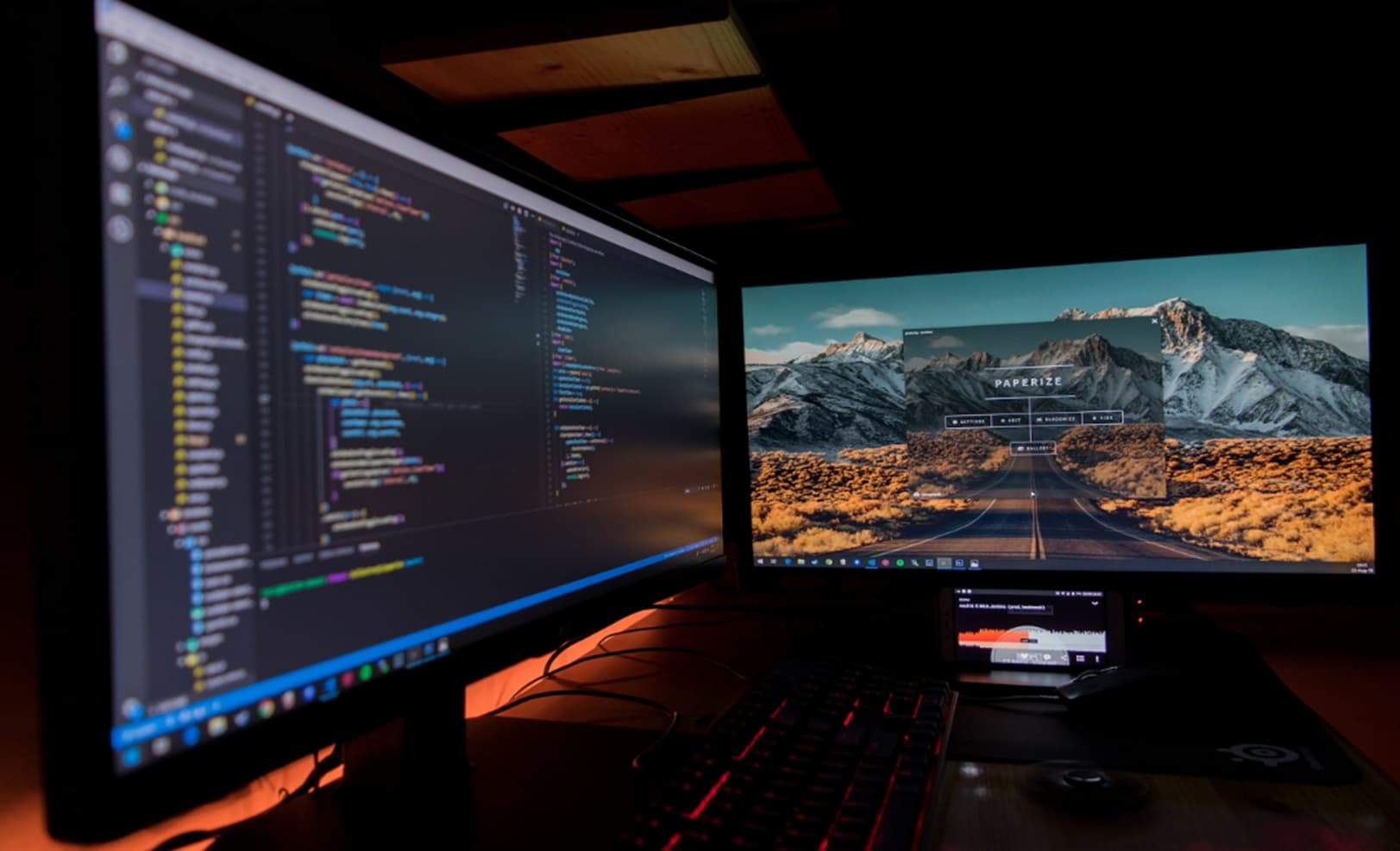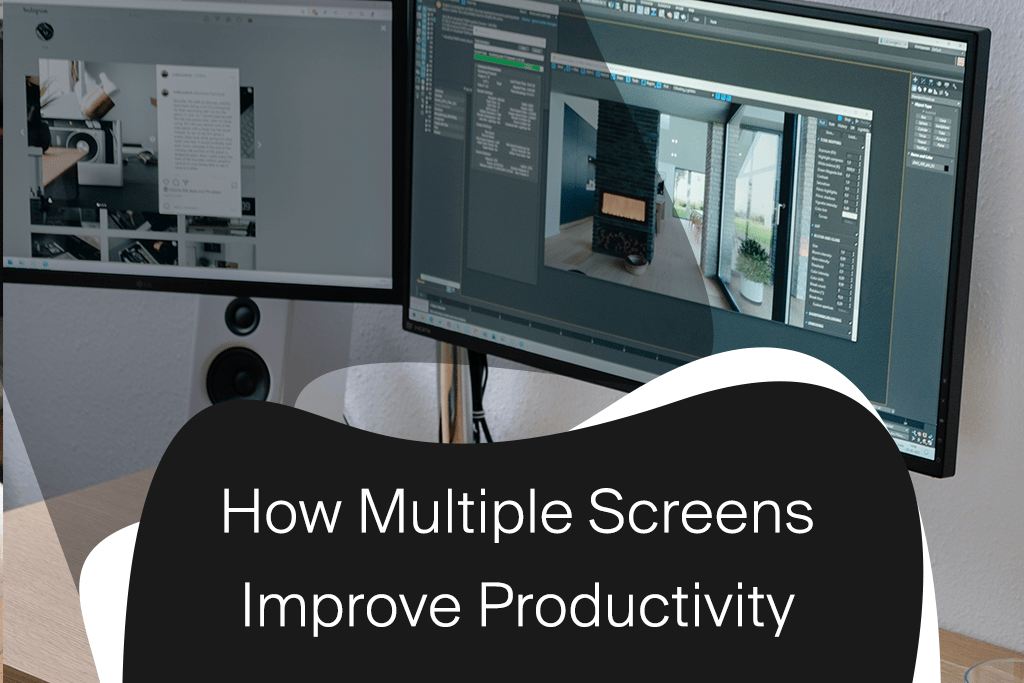In the modern digital age, where productivity reigns supreme, professionals and enthusiasts are constantly seeking innovative ways to optimize their efficiency and streamline their workflow. One such powerful tool that has gained significant recognition is the dual-screen setup. This introduction sets the stage for an enlightening exploration of how dual screens can revolutionize productivity and elevate your work to new heights.
The Definition of Dual Screens
Dual screens, as the name implies, involve the use of two monitors connected to a single computer, providing an expanded workspace. This arrangement allows users to have multiple applications, documents, or websites open simultaneously, enabling seamless multitasking and enhanced information processing.

The Promise of Enhanced Productivity
Dual screens have garnered immense popularity due to their potential to supercharge productivity. With the ability to view and work on multiple tasks simultaneously, professionals can navigate complex projects with ease, stay organized, and minimize the need for constant window switching. This setup promotes focus, streamlines workflows, and empowers individuals to accomplish more in less time.
Whether you’re a designer, programmer, content creator, or simply someone looking to maximize their productivity, this article will equip you with the knowledge and insights necessary to harness the full potential of dual screens. Get ready to elevate your productivity, streamline your workflow, and embrace a new era of efficiency with the power of dual screens.
The Benefits of Dual Screen Setup
- Increased Multitasking Abilities
One of the most prominent advantages of a dual-screen setup is the ability to multitask with ease. With two screens at your disposal, you can have multiple applications open simultaneously, allowing you to seamlessly switch between tasks. Whether you’re comparing documents side by side, monitoring data while working on a project, or participating in video conferences while referencing important information, dual screens enable efficient task management and boost productivity.
- Streamlined Workflow
Dual screens provide an expansive workspace that streamlines your workflow. Instead of constantly minimizing and maximizing windows or switching between applications, you can allocate different tasks to each screen. For example, you can have your primary work on one screen while keeping your email, messaging apps, or reference materials open on the other. This setup minimizes distractions and allows for a smoother, more focused work process.
- Improved Focus and Concentration
Switching between windows and applications can disrupt your concentration and hinder productivity. However, with dual screens, you can maintain focus by keeping all relevant information in sight. Whether you’re writing a report while referencing research materials, designing while reviewing feedback, or coding while monitoring system logs, dual screens eliminate the need for constant window switching and help you stay in the zone.
- Efficient Research and Data Analysis
Research and data analysis often involves juggling multiple sources of information. With a dual-screen setup, you can have research articles, data spreadsheets, and analytical tools all visible at the same time. This simultaneous view enables faster and more efficient data synthesis, comparison, and interpretation. Whether you’re conducting market research, analyzing financial data, or studying scientific papers, dual screens provide a significant advantage in terms of productivity and accuracy.
Ergonomics and Workspace Optimization
To create an ergonomic and optimized dual screen workspace, consider the following tips:

Position the monitors at eye level or slightly below to maintain a comfortable viewing angle.
Align the monitors side by side, ensuring that the edges of the screens are aligned for a seamless visual transition.
If possible, invest in a monitor stand or adjustable monitor arms to achieve optimal positioning and save desk space.
Arrange your keyboard and mouse in a way that allows for natural and comfortable movement between the screens.
By optimizing your dual screen workspace ergonomically, you can minimize strain on your neck, shoulders, and eyes, leading to a more productive and comfortable work environment.
Best Practices for Utilizing Dual Screens Effectively
- Organizing and Managing Windows
Efficiently organizing and managing windows across your dual screens is crucial for a seamless workflow. Consider the following techniques:
Use the Snap feature or window management software to easily arrange and resize windows. This allows you to allocate specific applications to each screen based on priority and relevance.
Drag and drop files and content between screens to streamline tasks and information sharing.
Utilize virtual desktops or workspaces to further enhance organization and minimize clutter.
- Customizing Dual Screen Workflow
Customizing your dual screen workflow can greatly enhance your productivity. Consider the following customization options:
Identify the applications and tools you use most frequently and position them strategically on one screen for easy access.
Customize taskbars and shortcuts to streamline navigation and quick access to frequently used applications.
Explore productivity software and tools specifically designed for dual screen setups.
These tools can enhance multitasking, provide advanced window management features, and increase overall efficiency.
- Keyboard Shortcuts and Productivity Tools
Harnessing the power of keyboard shortcuts and productivity tools can further optimize your dual screen workflow. Consider the following:
Learn and utilize keyboard shortcuts for switching between screens, moving windows, and performing common tasks. This reduces reliance on the mouse and boosts efficiency.
Explore productivity tools that complement dual screen usage. These tools can include clipboard managers, note-taking apps, task managers, and project management software.
By incorporating these best practices into your dual screen workflow, you can maximize the benefits of your setup and elevate your productivity to new heights.
If you work with multiple monitors, you know how useful they are for multitasking, productivity, and creativity. But you also know how frustrating it can be to switch between them, especially if you have to use your mouse or navigate through menus. Fortunately, there are keyboard shortcuts and hotkeys that can help you switch between multiple monitors quickly and easily. In this article, we’ll show you how to use them and customize them to suit your needs.
What are keyboard shortcuts and hotkeys?
Keyboard shortcuts and hotkeys are combinations of keys that perform specific actions or commands without using the mouse or the graphical user interface. For example, Ctrl+C and Ctrl+V are keyboard shortcuts for copying and pasting, while Win+L is a hotkey for locking your computer. Keyboard shortcuts and hotkeys can save you time, reduce errors, and improve accessibility.
How to switch between multiple monitors with keyboard shortcuts?
One of the most common keyboard shortcuts for switching between multiple monitors is Win+P, which opens a menu that lets you choose how to project your display. You can select PC screen only, Duplicate, Extend, or Second screen only. Extend is the option that allows you to use multiple monitors as one large workspace, while duplicate shows the same content on both screens. You can use the arrow keys or the mouse to select an option and press Enter to apply it.

This list contains the keyboard combinations (left hand column) and the outcome (right hand column). All keys in the combination must be pressed at the same time.
| Result | Keys |
| Clear all but the active window | Windows Key + Home |
| All windows become transparent so you can see through to the desktop | Windows Key + Spacebar |
| Maximize the active window | Windows Key + Up Arrow |
| Maximize the active window vertically | Shift + Windows Key + Up Arrow |
| Minimize the window/Restore the window if it’s maximized | Windows Key + Down Arrow |
| Dock the window to the side of the current monitor | Windows Key + Left/Right Arrows |
| Move the window to the monitor on the left or right | Shift + Windows Key + Left/Right Arrows |
| Press again to bring all previously opened windows back onto the screen | Windows Key + D – Shows the Desktop |
| Opens the window of the corresponding numbered Task Bar button, starting from the left as 1, next 2 an so on. | Shift + Windows Key + [Number Key] |
In conclusion, dual screens are a game-changer for productivity. With the ability to multitask, streamline workflows, and enhance focus and data analysis, they unlock immense potential. By optimizing workspace ergonomics and implementing best practices like window organization and keyboard shortcuts, users can achieve peak efficiency. Embrace the power of dual screens and unleash your productivity in your daily work.

